This how to eat more fibre post will give you lots of ideas and recipes to increase the fibre in your diet.
Benefits of eating more fibre
Eating more fibre is one of the most beneficial steps you can take to improve your diet and your health. You'll feel the positive effects of eating more fibre immediately. It will make you feel fuller, and it will also improve your digestion, and keep things moving. Eating more fibre can help you to lose weight, and give you more energy. Even more importantly, there are also some critical long term effects that will really benefit your health.
- Heart disease: eating more fibre can help to lower your risk of heart disease by reducing the level of cholesterol in your blood. Lower levels of cholesterol will also help to reduce your risk of a stroke by decreasing the chance of blood clots
- If you have a high fibre diet, your risk of diabetes is reduced. This is because fibre will slow the rate at which your blood sugar levels rise
- Eating more fibre will also help to reduce your chances of bowel cancer. Bowel cancer is one of the most common types of cancer in the UK, and there is compelling evidence that eating fibre is beneficial in reducing your risks
Fibre is also key to the health of your digestive system. It feeds good bacteria in your gut which will help to protect the cell walls and boost your immunity
How much fibre should I eat?
Current recommendations are that we should be eating around 30 g of fibre per day. (See the British Heart Foundation's recommendations on fibre here) It is estimated that on average adults currently get around 18 g, so we need to find ways of increasing our increasing our daily fibre intake. However it's important to remember that you can have too much of a good thing. If you eat over 50 g of fibre a day, you may end up with uncomfortable digestive symptoms such as gas and bloating. There are also some medical conditions such as Crohn's disease where you might be advised to eat a low fibre diet, so please ensure you take advice from your medical practitioner.
If you are increasing the amount of fibre that you eat, it is recommended that you do this gradually. You will also need to drink a little more water.
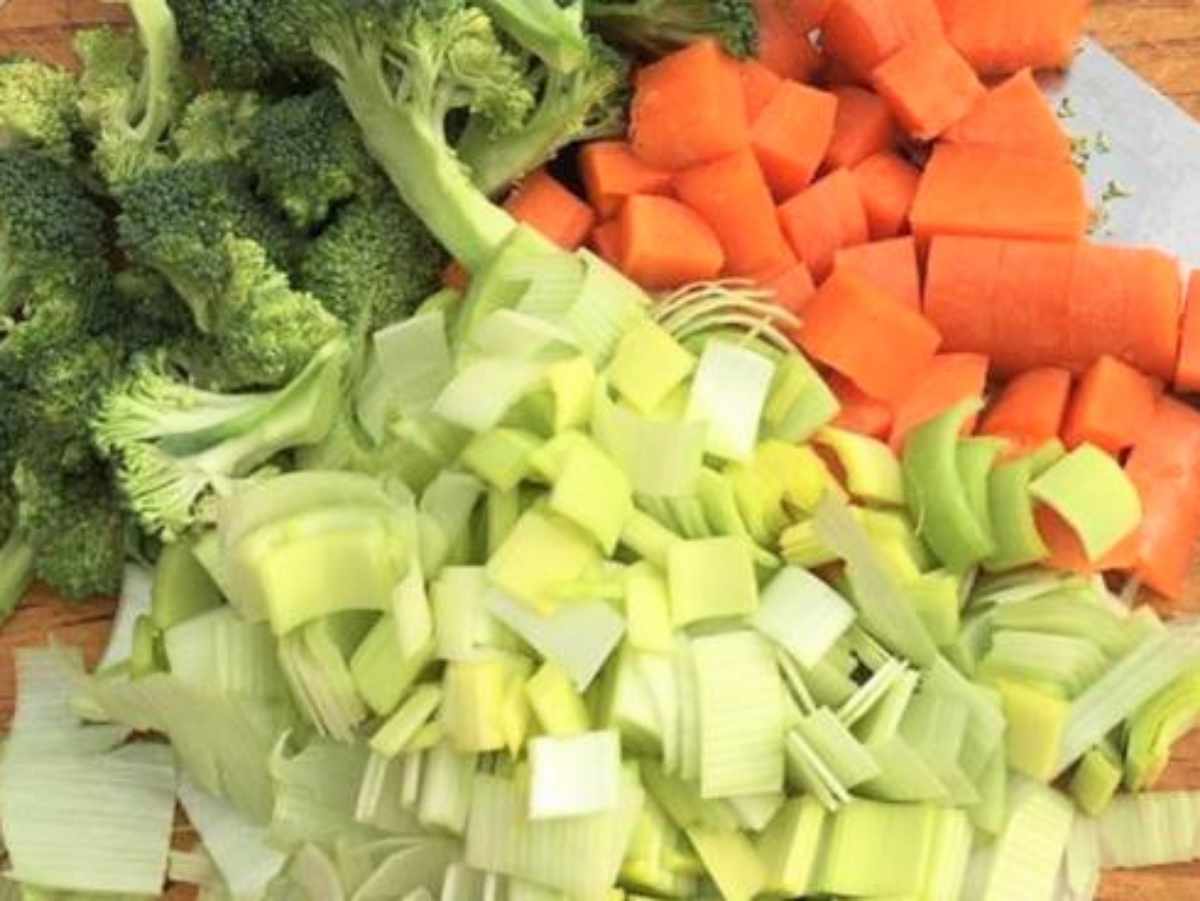
Types of fibre
There are two key types of fibre, and you need both of these in your diet. However, many healthy foods such as vegetables contain both types of fibre.
Soluble fibre
This kind of fibre is key in the prevention of heart disease. It is found in ingredients such as oats, beans, fruits and veggies. It forms a gel like substance which can bind on to harmful agents such as excess cholesterol.
Insoluble fibre
Insoluble fibre is a bulking agent which helps to move food through your digestive system. This is important as it means waste products spend less time in your system. Insoluble fibre is found in the structures of fruit and veg such as the skin and seeds. Wholegrains are also an important source of insoluble fibre. It is also sometimes known as roughage.
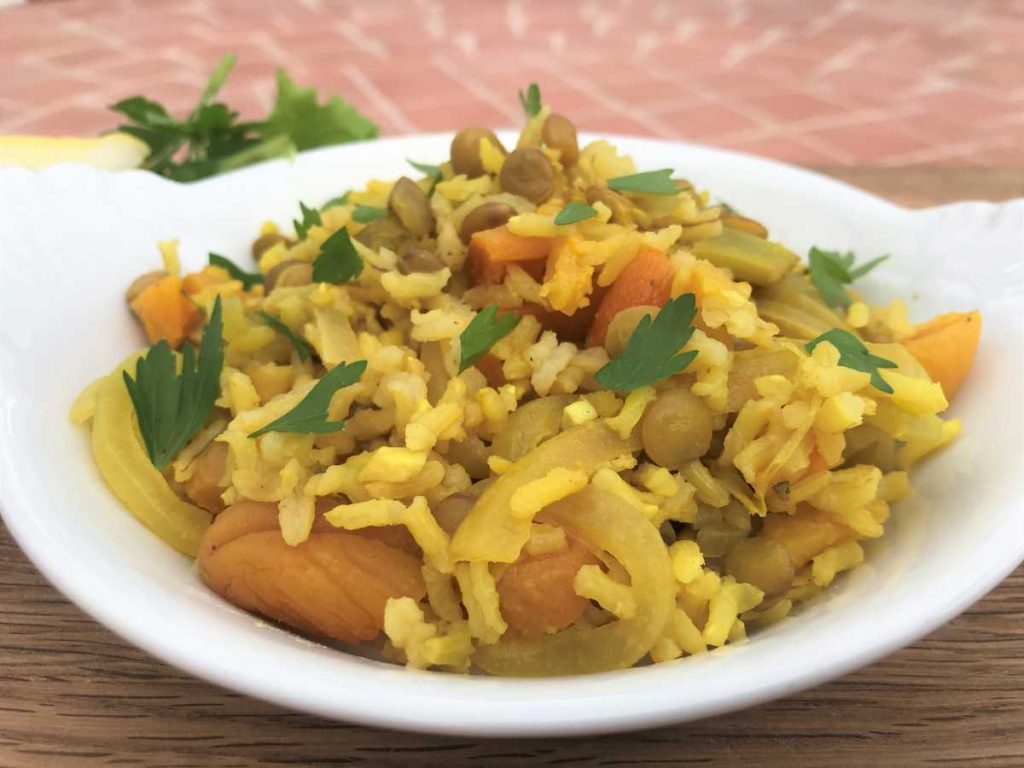
How to eat more fibre - top tips
Switch to wholegrains
One of the easiest ways to eat more fibre is to substitute some of your white processed grains for their wholegrain equivalents. And by eating wholegrains, you'll also be adding a great natural source of b vitamins to your diet. So try switching to wholemeal bread, pasta and rice. Brown rice has a lovely nutty flavour. It can be used to replace white rice in most recipes, including this easy egg fried rice with brown rice . Pastry is also delicious made with wholemeal flour, and particularly complements savoury recipes. You might also like to experiment with some other grains in your baking such as coconut flour and quinoa flour which are high in fibre. Oats are also a wholegrain and add a delicious texture to desserts such as this healthy rhubarb crumble.
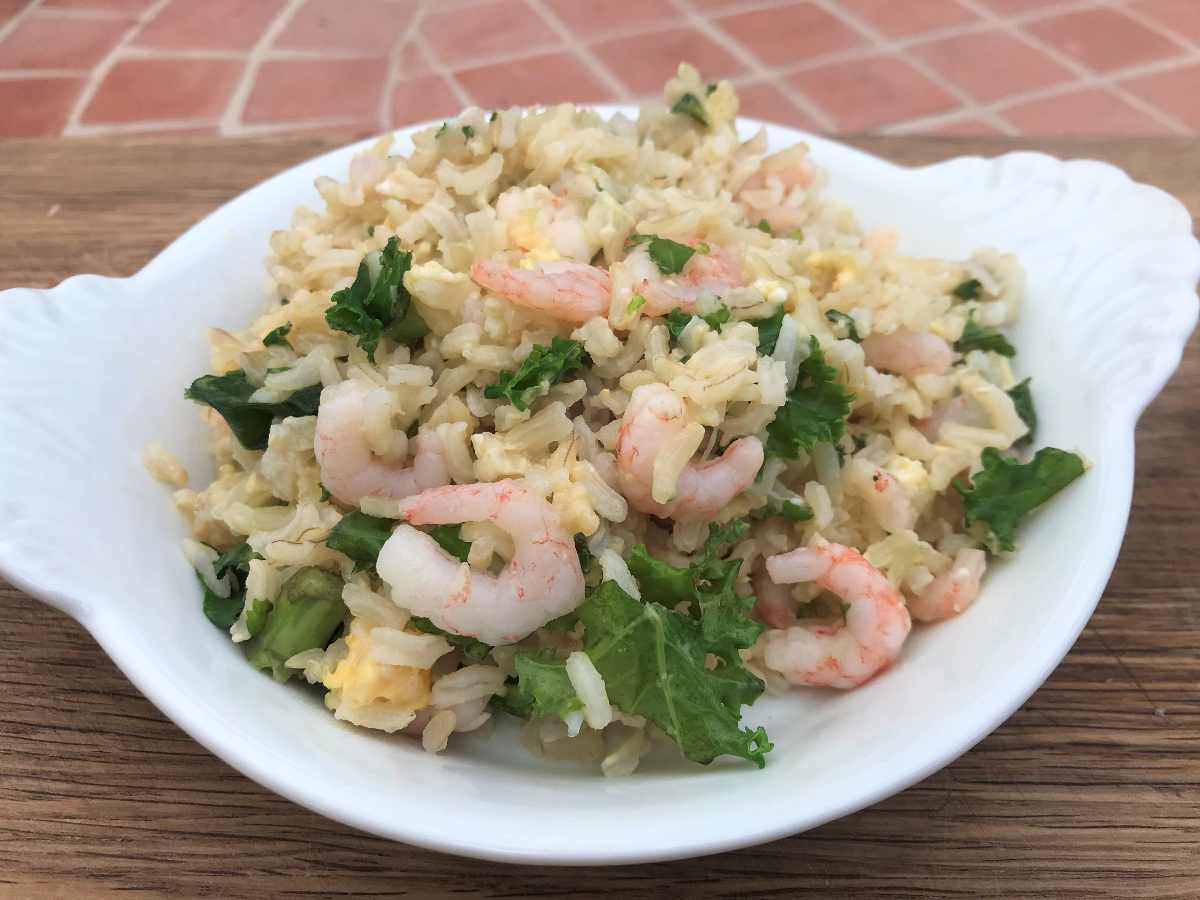
How to eat more fibre - include more pulses in your diet
Pulse are an excellent source of fibre in our diets. Most of us are pretty familiar with baked beans, but there is a wide range of beans which are available in cans. They can easily be added to recipes such as this higher fibre gluten free lasagne and healthy cottage pie. You could also enjoy pulses in this butter bean hummus or 2 ingredient hummus made with canned chickpeas. Lentils are also available in cans, but as most lentils cook fairly quickly, you might prefer to use dried lentils. Red lentils soften and break down so are great for thickening soups and stews. Peas are also a type of pulse, and a great way of adding more fibre to your diet.
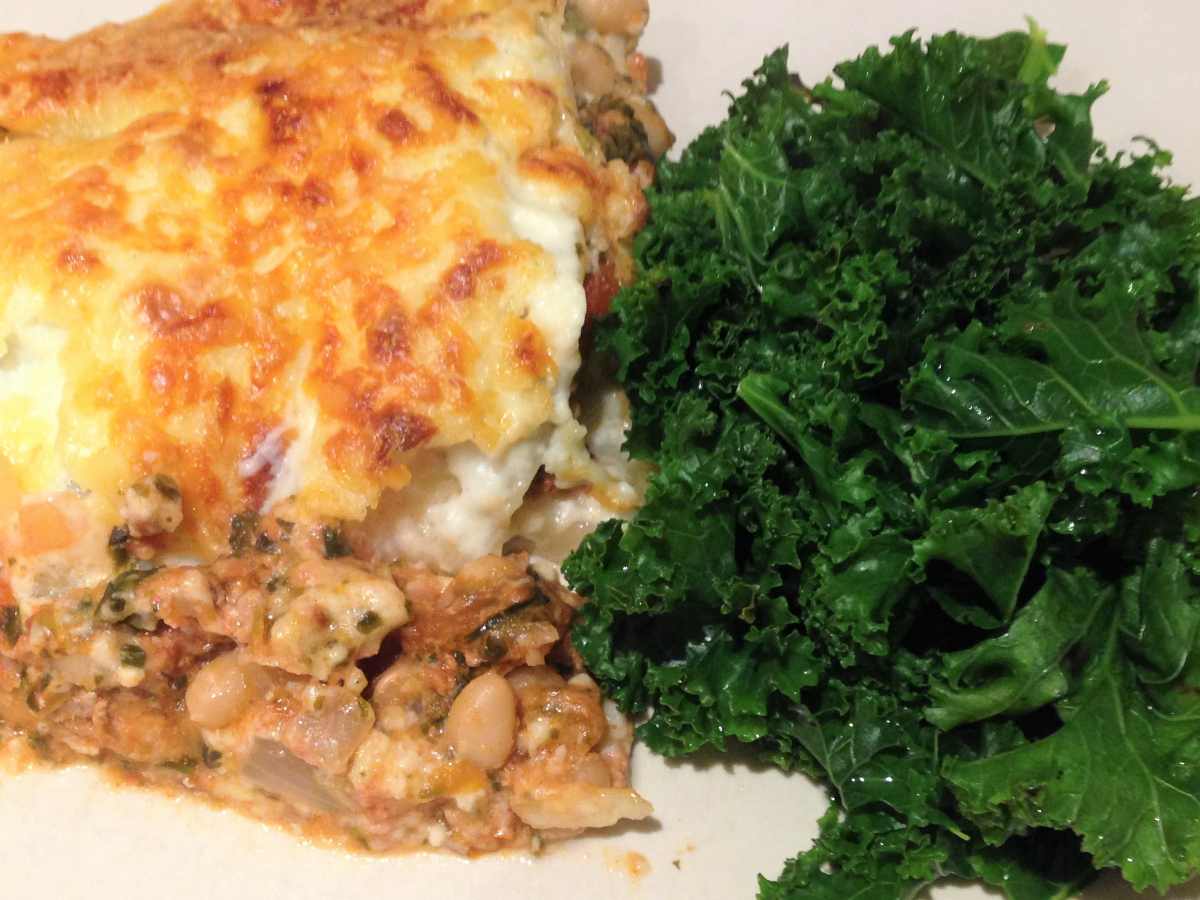
High fibre fruits
Most fruits with a fibrous edible skin such as apples and pears are high in fibre. The tiny seeds of berries are also a rich source, and one cup of raspberries contains a whopping 8 g of fibre. Fruit is one of the easiest things to add to your diet as a snack or a dessert. Or try adding even more fibre to your fruit by baking it into a healthy fruit crumble with oats.

High fibre vegetables
All vegetables are good for your health. But some are particularly high in fibre, including green veg and root vegetables. The skin of vegetables are especially high in fibre, so try to leave the skin on when you prepare them. Baked potatoes - white or sweet - are delicious served in their skins , and you can also leave the skin on potatoes when you are roasting or mashing them.
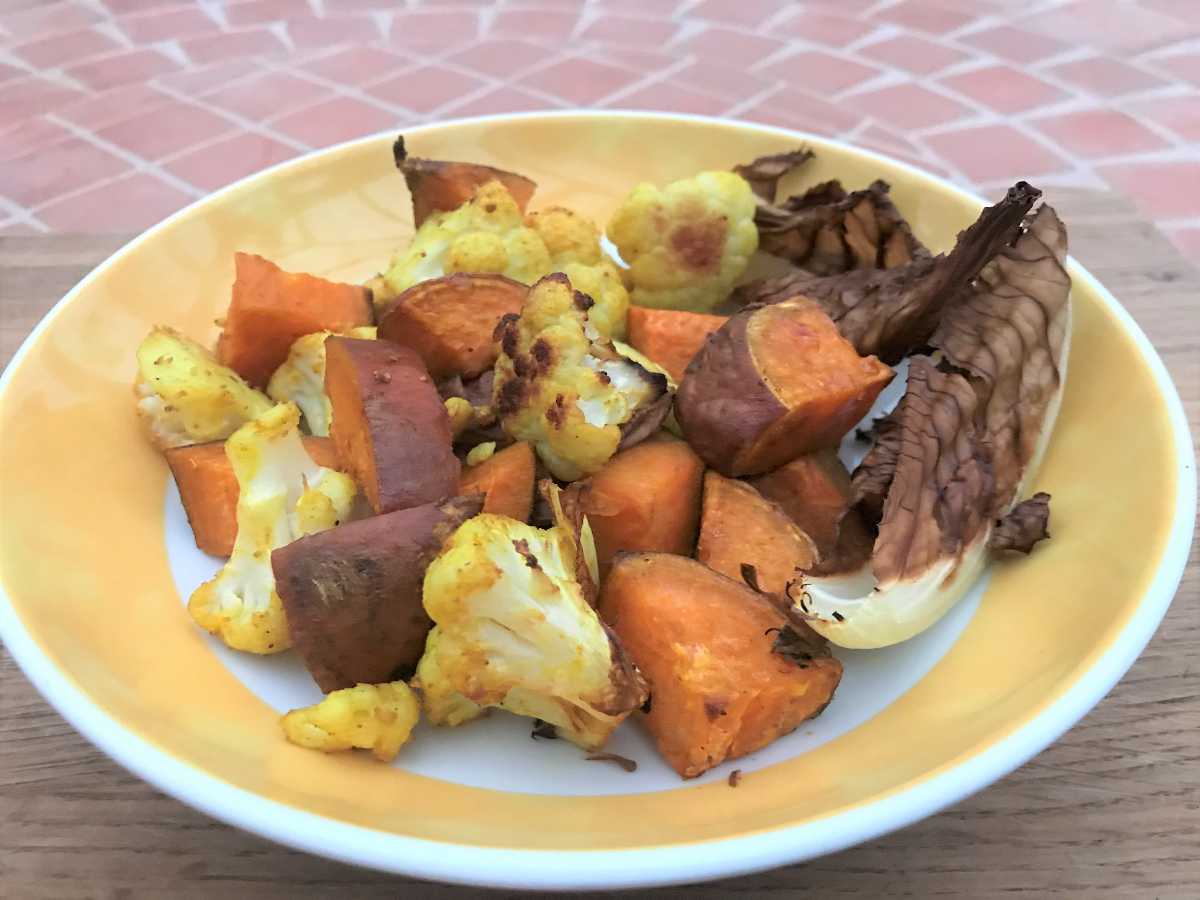
How to eat more fibre for breakfast
Get the day off to a good start by including some fibre in your breakfast. It'll fill you up and help to stop you from snacking throughout the morning. There are plenty of choices of healthy wholegrain cereals. Oats are a great option. A 50 gm serving will provide you with 5 g of fibre. Choose rolled or porridge oats as these are higher in fibre than instant oats.
In the winter, porridge will get you off to a great start, and you might also like to try these other oat based recipes
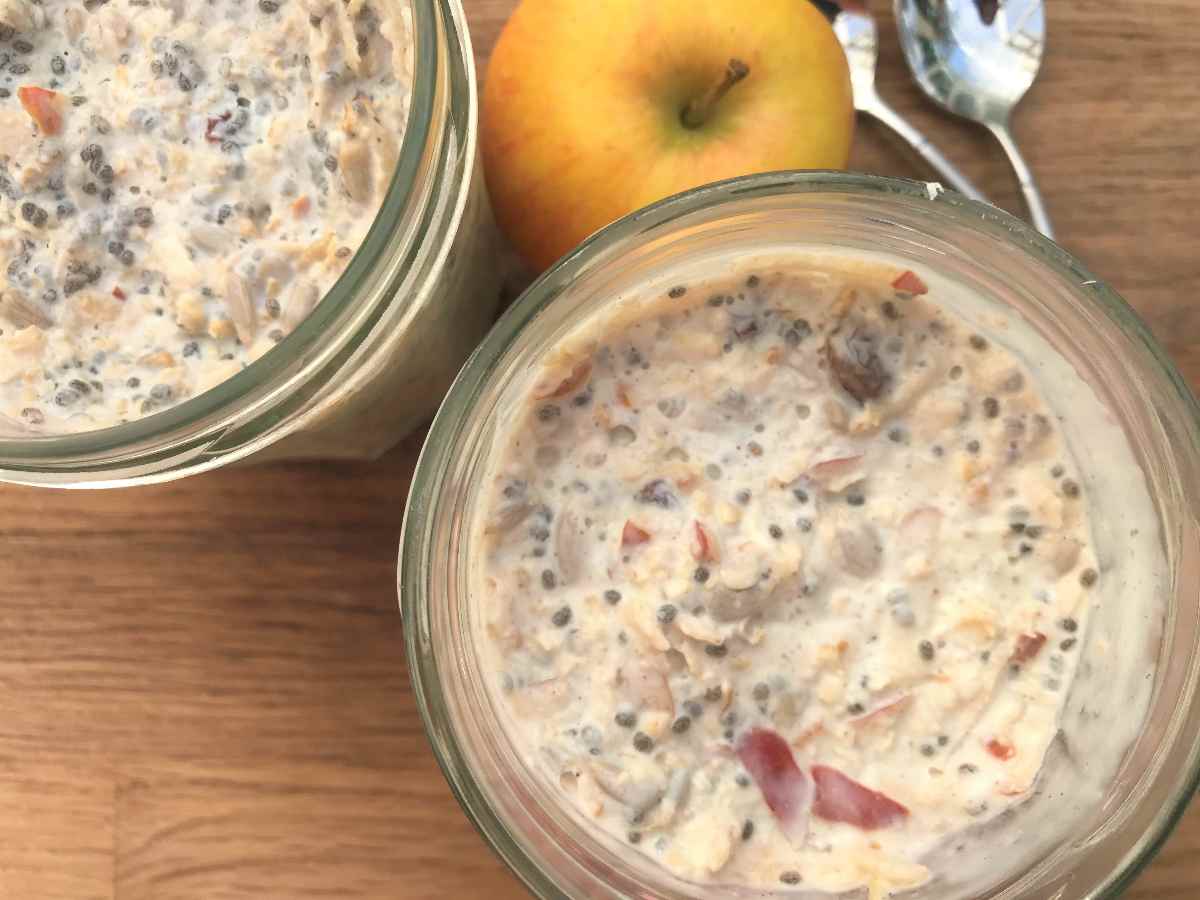
If you'd like to have muffins for your breakfast, the following recipes are higher in fibre than a conventional recipe and will keep you fuller for longer.
- Healthy high fibre breakfast muffins with quinoa
- Healthy blueberry muffins with coconut flour
- Healthy apple muffins
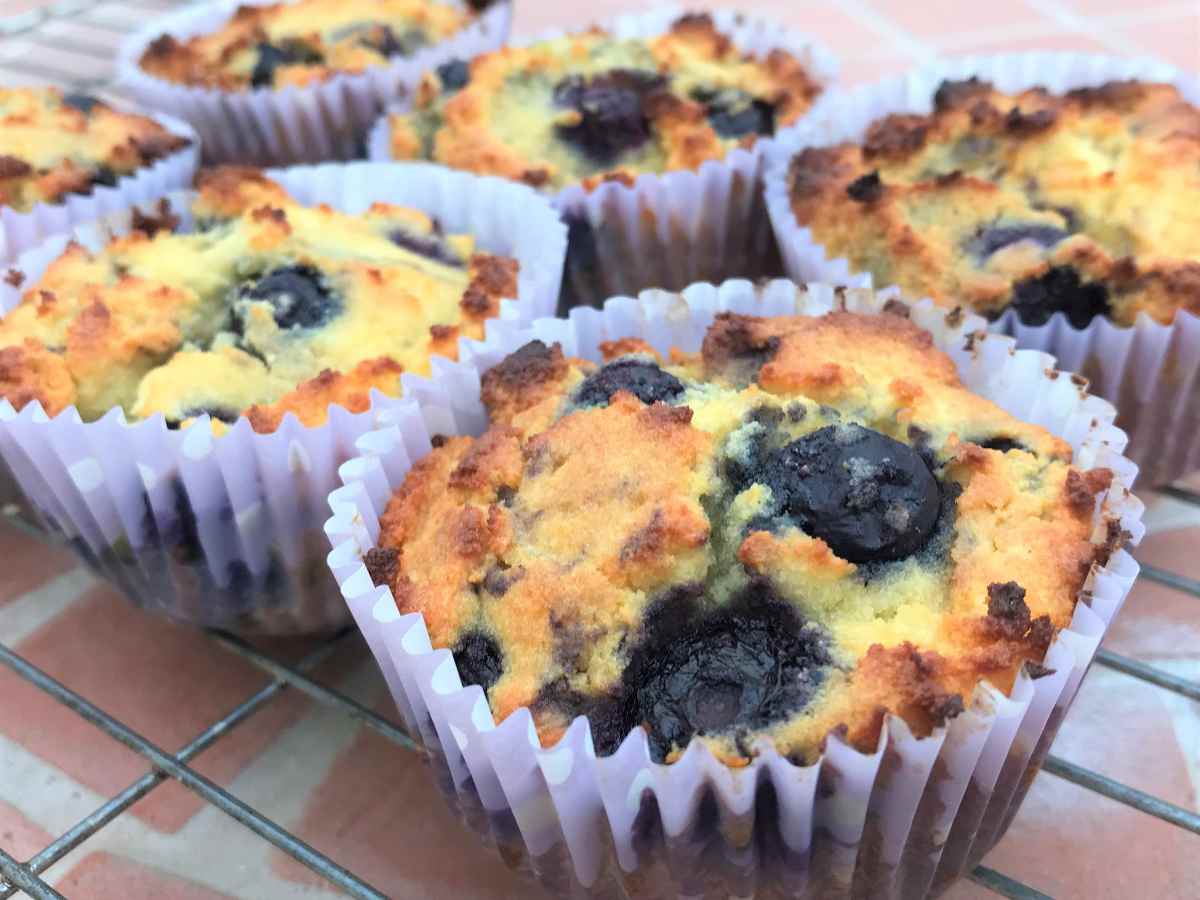
You can also increase the fibre content of you breakfast by adding an extra portion of fruit such as banana or blueberries. Either of these will add around 3 g of fibre. Or turn your fruit into a delicious 10 minute low sugar jam with chia seeds, which adds even more fibre.
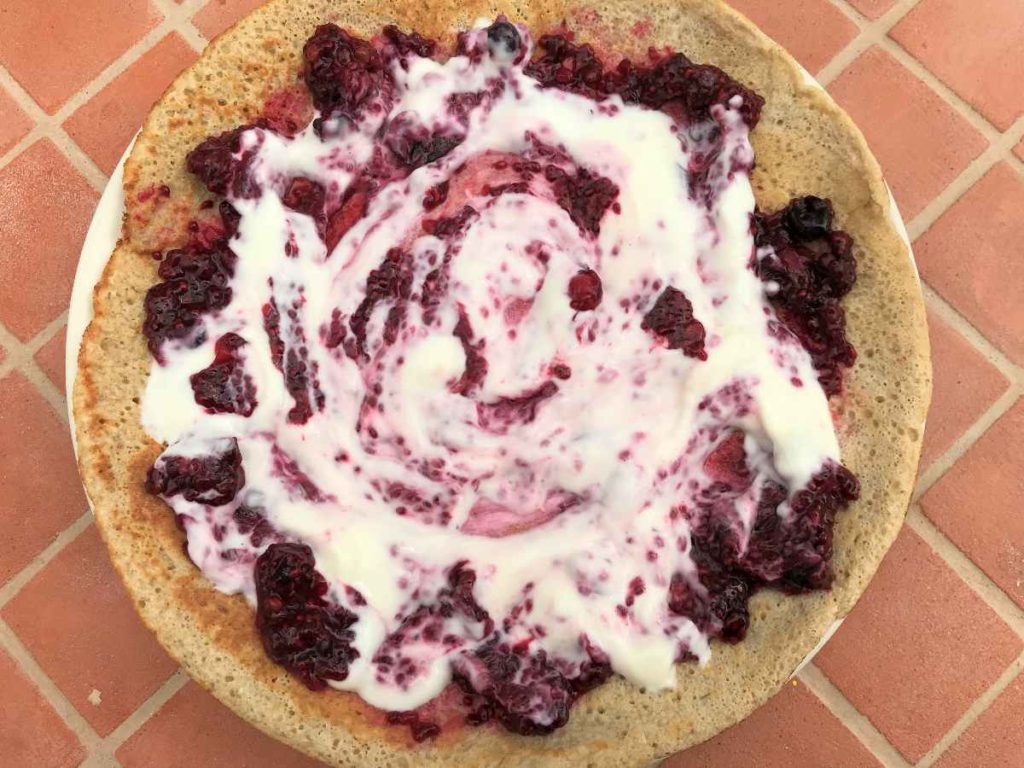
How to eat more fibre - snacks
Try switching some of your snacks for high fibre options. Chickpeas are rich in fibre, and hummus served with some carrots and celery will add a useful 4.5 g of fibre. Roast chickpeas are also delicious as a pre-dinner nibble. Popcorn is a wholegrain and contributes 2 g of fibre for every cup and a half - just be careful that it's not smothered in sugar. Surprisingly, cocoa is also high in fibre, so you could treat yourself to a high quality dark chocolate. You could also try these healthy adzuki bean brownies which use beans as a replacement for flour. Each brownie contains just over 2 g of fibre.
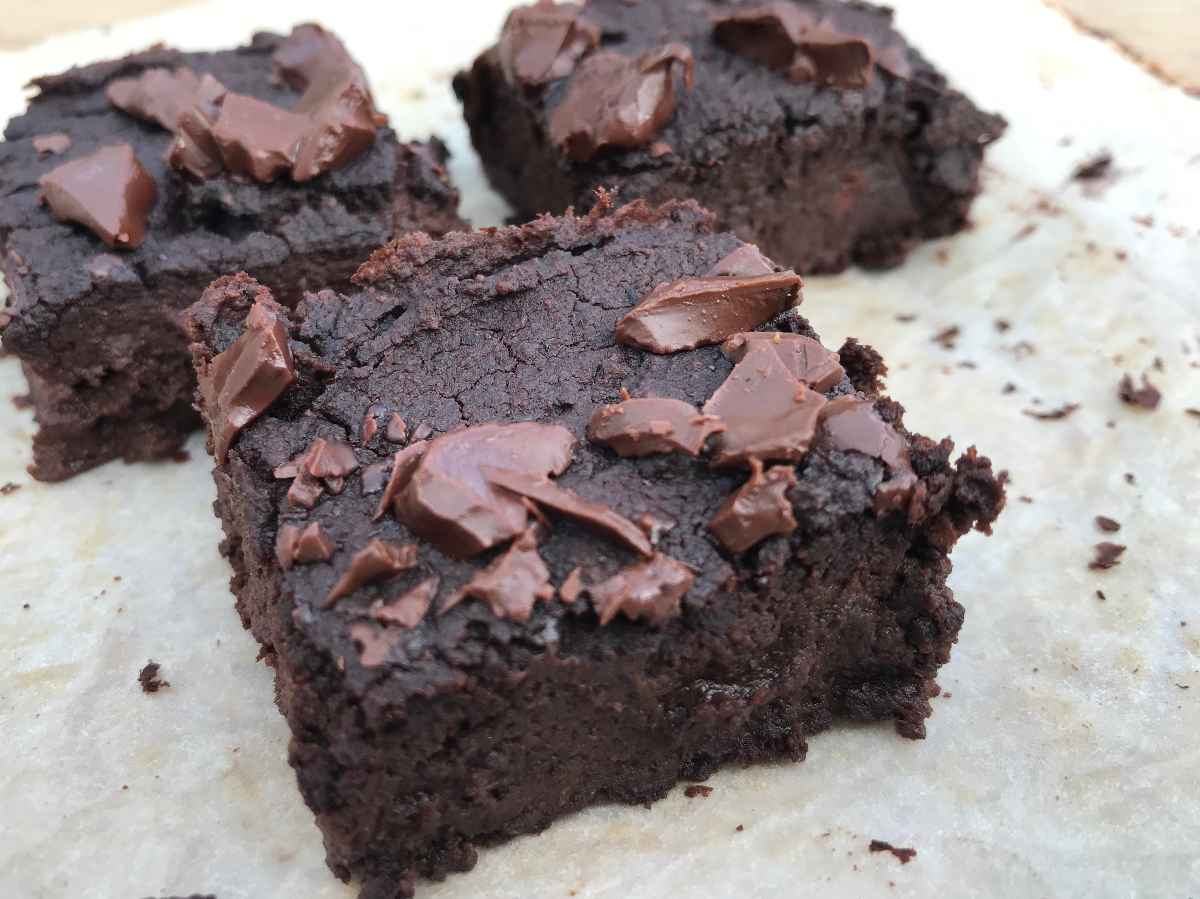
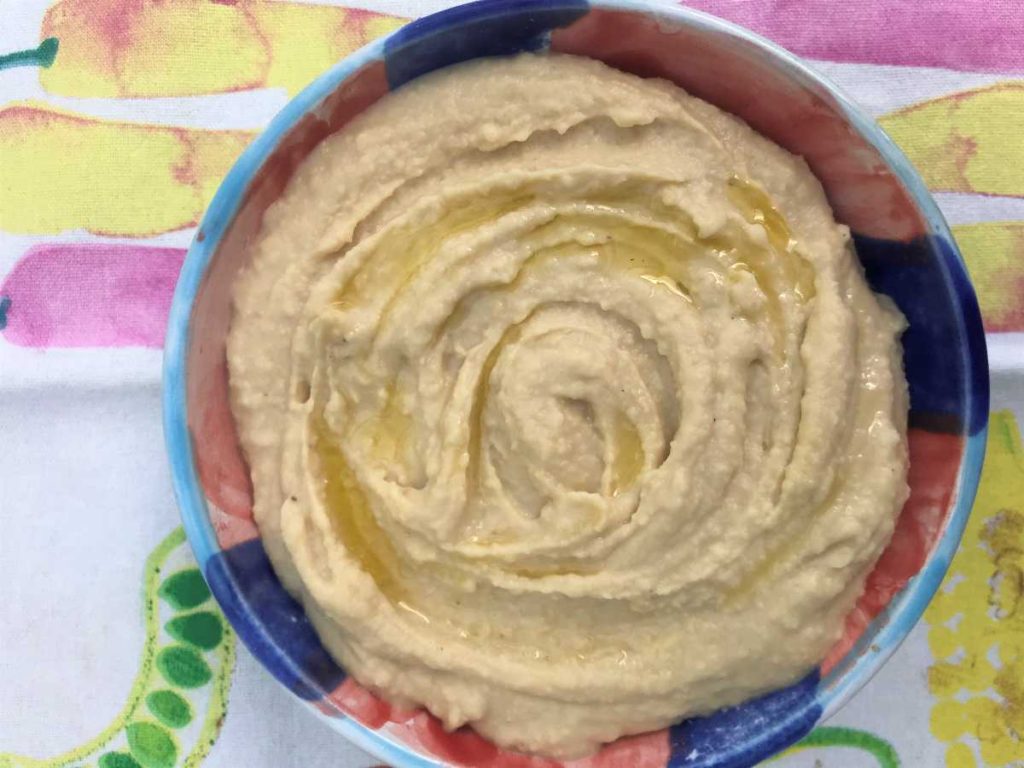
Eat more resistant starch
Resistant starch is a kind of soluble fibre which forms when certain starchy foods such as potatoes, rice and pasta are cooked and cooled. So if you want to increase your fibre intake, try eating your pasta cold in a salad.
Nuts and seeds - a high fibre snack food
Nuts and seeds are a very good source of fibre, especially if you eat them with the skins on. They are great snacking ingredients, and can be added to many recipes. Chia seeds are particularly high fibre, and one tablespoon of chia seeds contains 5g. Most other nuts and seeds will add 1-2 g of fibre which will all help towards your daily total.

This gluten free seed bread is a tasty way to pack lots of healthy seeds into your diet. It's ideal for open sandwiches, and delicious with smoked salmon or mackerel pate. And at Halloween, if you're carving a pumpkin, don't forget to save the seeds to roast in the oven.
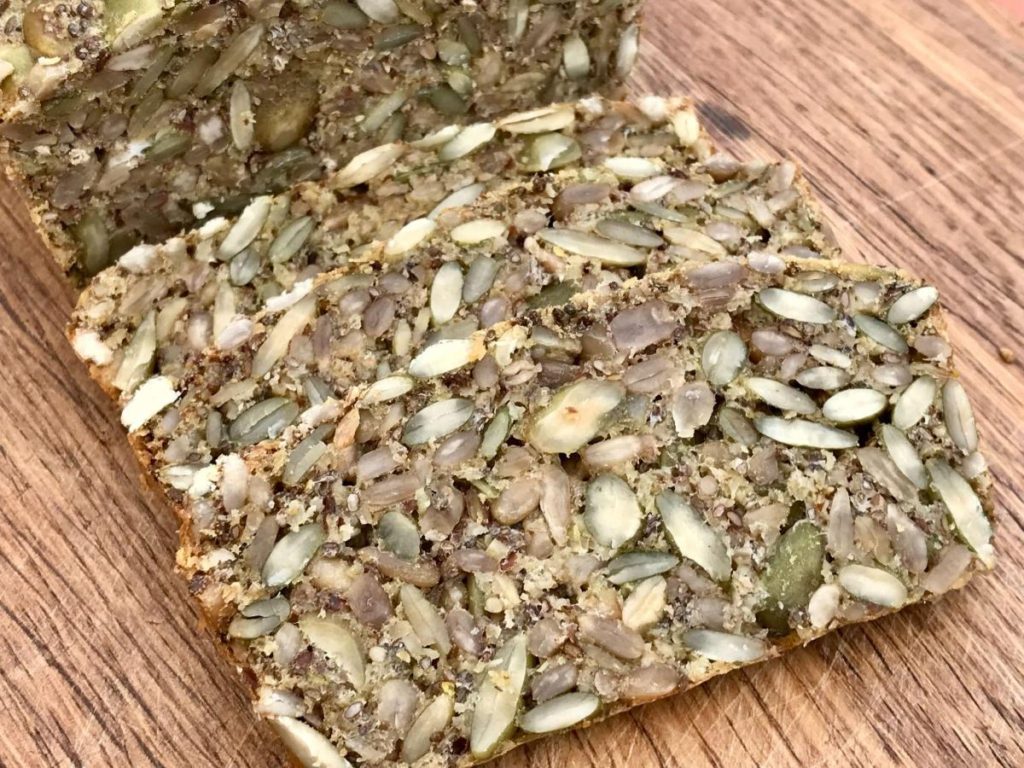
Menu planning - how to eat more fibre
Below is an example menu for the day which would comfortably provide you with your recommended 30 g of fibre a day
Breakfast
Lunch
- Tomato and red lentil soup
- Cheese on wholegrain toast
- Apple
Dinner
- Healthy cottage pie
- Kale
- Blueberries and raspberries
Do you find it easy to get enough fibre in your diet? Do you have any other tips or questions? If so, please do get in contact.


Comments
No Comments